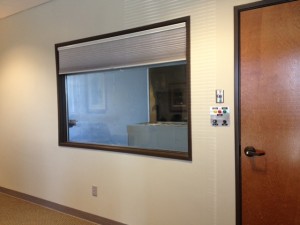09 Oct Can I View an Unembalmbed Body
aCremation often gets asked if it is possible to view an unbembalmed body. In most cases – yes – if held soon after the death occurs. It’s important to remember that decomposition begins immediately. The longer the time between death and the viewing, the greater the chance that viewing will not be recommended.
 Viewings when selecting Direct Cremation
Viewings when selecting Direct Cremation
By definition,* direct cremation does not involve a formal viewing. Instead, the family may request an identification viewing, or ID viewing. Most cremation service providers offer ID viewings. Each funeral home or cremation service provider will determine whether there is a fee or not based on the specific situation.
A true ID viewing is held when there is no family, close friend, or trusted medical worker present at the time of death. This commonly occurs when a person died unexpectedly and was taken directly to the medical examiner. Typically this involves one or two family members identifying the body in person at the funeral home or crematory. Many find this is helpful in the family’s grieving process but also beneficial to the crematory to confirm no error in identification has been made.
In cases where a close or trusted person was present at the time of death, the family still may request an ID viewing. Typically, there is a fee associated with this service since initial identification has already been made. This form of ID viewing is frequently used by close families members who were not present at the time of death and feel seeing the deceased will aid them in their grieving process. These viewings are typically only a few minutes and limited to a small number of people.
Should a family want to hold a formal viewing with visitation hours, many traditional funeral homes will accommodate this at a set fee and typically only after embalming occurs.
There are other options
In a majority of deaths, there is a trusted person present to positively identify the person so a viewing is not necessary. Positive identification is made at the time of death and an identification band is placed on the body which will remain on the deceased until cremation occurs. The other widely-used method is for the family to provide a recent photo with a physical description. A funeral director or crematory manager then uses the photo and description to verify the identity on behalf of the family.
What to expect
It is important to know an ID viewing is different than what most people have experienced during a traditional funeral or formal viewing. ID viewings do not include cosmetic improvements (also called restorative art) made to the deceased. The body is typically cleaned and placed on a table covered with a sheet other than the face. It is truly meant for identification only. Depending on the condition of the deceased at the time of death, some may find this disturbing. Our experience is that knowing up-front how the body is presented helps prepared loved ones so the experience is a positive one.
There are times when a funeral director will not recommend an ID viewing and suggest an alternative ID method. When this occurs, families should seriously consider taking their advice. Funeral Directors are trained, licensed professionals who are concerned about the family, not just the deceased. If there is serious injury to the deceased or if the deceased is in an advanced state of decomposition, it is their responsibility to let the family know that the body is no longer in a condition where it should be seen in an unembalmed state. In these cases, using a photo and/or unique physical characteristics is the best approach, unless the family wishes to have their loved one embalmed.
* As defined by the Texas State Funeral Commission.

